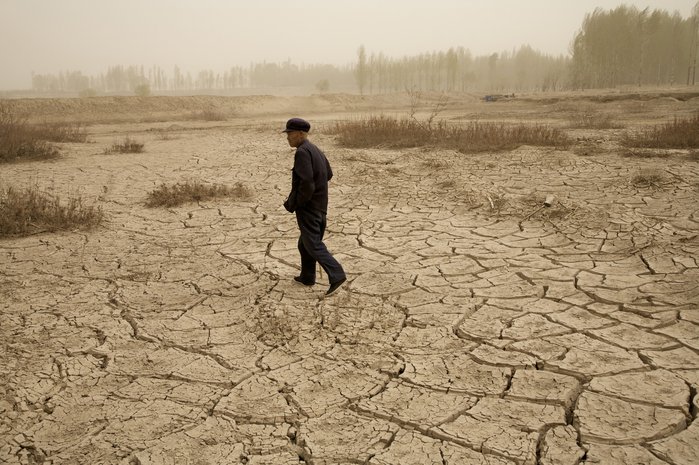Benoit Aquin
The Chinese Dust Bowl
In his series The Chinese Dust Bowl (2006–2009) Benoit Aquin documents the desertification of vast areas of land in China and its impact on the local population. The extreme droughts in northern China and Inner Mongolia are certainly among the greatest environmental disasters of our time, and they are due to global warming and mankind’s ecologically harmful activities. Vast regions are turning into deserts as a result of the overexploitation of arable land, overgrazing by farm animals, and boring for water. The consequences include large-scale desertification of the soil and sandstorms that then sweep across Beijing, Korea, Japan, and even the United States. The economic damage, such as crop failures and disruptions to air and road travel, is compounded by health problems. In his work, Aquin documents arable land that has dried into steppes, parched soil clearly riddled with deep cracks, and the people who suffer due to this environmental catastrophe. The sheer vastness and muted colours of Aquin’s photographs underscore the impression of exhaustion and breathlessness. Aquin’s images encourage us to reflect on these extreme weather phenomena and their causes and raise our awareness of the state of our environment.
Benoit Aquin, born 1963, lives in Montreal, Canada.
Dust Bowls
The term ‘dust bowl’ was first coined in the 1930s in connection with the Midwest of the United States when the prairies of the Great Plains were ploughed up to cultivate wheat, resulting in severe dust storms, wind erosion and desertification. This ecological disaster was repeated in the Soviet Union under Khrushchev in the 1950s and 1960s, even though by then its causes were known. Here too, vast areas of land in Kazakhstan, Russia and western Siberia were ploughed up to increase agricultural production; drought and wind erosion on a massive scale were the result, with large areas of arable land lost to the desert.
Currently, regions south of the Sahara and in China and Mongolia are at risk of desertification. Overgrazing destroys the protective topsoil and grass layers, making the soil vulnerable to wind erosion. In China, around 27 per cent of the country’s total surface area is affected by desertification, which has a huge ecological and economic impact, but also puts the livelihoods of some 400 million people at risk; it is also one of the main causes of poverty.
Sources
- Janet Larsen, Expanding Dust Bowls Worsening Food Prospects in China and Africa, earth-policy.org, 20.12.2012.
- Qi Lu, Sen Wang, Dust-sand storms in China: disastrous effects and mitigation strategies, paper submitted to the XII World Forestry Congress, 2003, Québec City, Canada.
- UNEP, WMO, UNCCD, Global Assessment of Sand and Dust Storms. United Nations Environment Programme, Nairobi, 2016.

